Bucephalandra: varieties, keeping in the aquarium and care
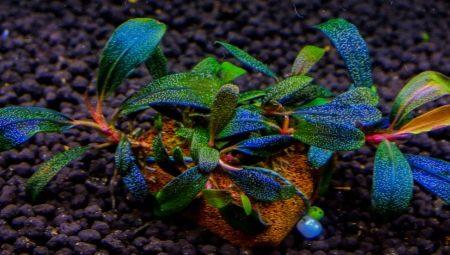
Every aquarist knows that aquatic vegetation is an indispensable element of the aquarium ecosystem. Not only do plants give the artificial reservoir an aesthetic appearance, but they also become a shelter, a source of nutrition and oxygen for underwater inhabitants. So, the bucephalandra aquarium plant is gaining popularity.
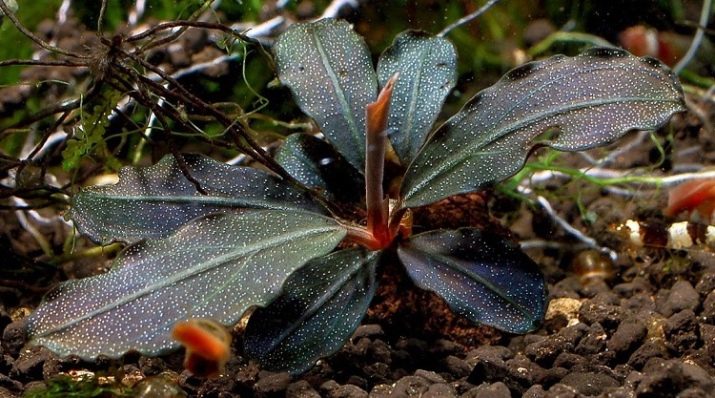
Description
In nature, this culture prefers to grow in reservoirs with a large current: rivers, streams, waterfalls. In its natural environment, the plant attaches itself to driftwood or lava. There are several varieties, and almost all of them grow underwater. The leaves have a different structure: they have a wavy, smooth or oval shape. The color may also differ: green, bluish, red, brown, dark purple. In some bucephalandra, the leaf blade is characterized by a weak spotting.
There are species that, in the process of growth, prefer to reach the surface, although they are not shown in the air. Some, on the other hand, like to develop parallel to the bottom of the aquarium. If you plant several species in one tank, then you can create a very beautiful multi-colored composition.
The plant appeared recently among Russian aquarists, but quickly became popular. This is due ease of care and undemanding conditions of detention.
Even a novice aquarist can grow a culture.
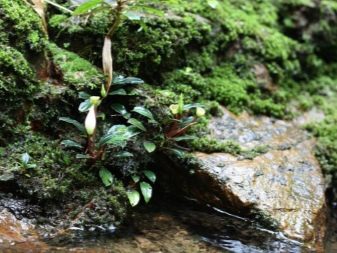

Varieties
As mentioned above, different types of bucephalandra differ in appearance. So, the shape of the leaves can be oval or back-lanceolate. Their color varies from green to silver and even reddish-brown, and some specimens can even cast iridescent shades. Plants are also classified according to the characteristics of the edges of the leaves.They are straight and wavy.
The differences in the species are in the conditions of detention. For example, they take different times to form shoots. One species needs a week to "produce" foliage, while the other takes two months. Leaves fly around very rarely (regardless of the type of plant).
The culture in question has different sizes. Some are mini-plants and do not grow more than 5 cm, others are much larger.
Let's consider the most famous types.
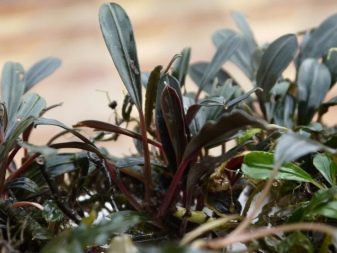
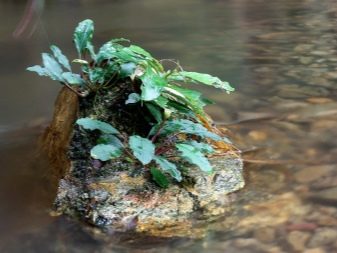
Brownie phantom
Refers to new products. Among the advantages is noted unpretentiousness in care, as well as an interesting appearance: a golden dusting is formed on its leaves. The features of the content include the need for liquid dressing and unpretentiousness to lighting.
Temperature favorable for development - 20-30 degrees above zero. Reproduction occurs due to green branches and side shoots, which are cut for breeding. Reproduction by seeds is possible. Lack of variety - its low availability.
It is problematic to find Brownie Phantom on sale, since it is characterized by slow growth.
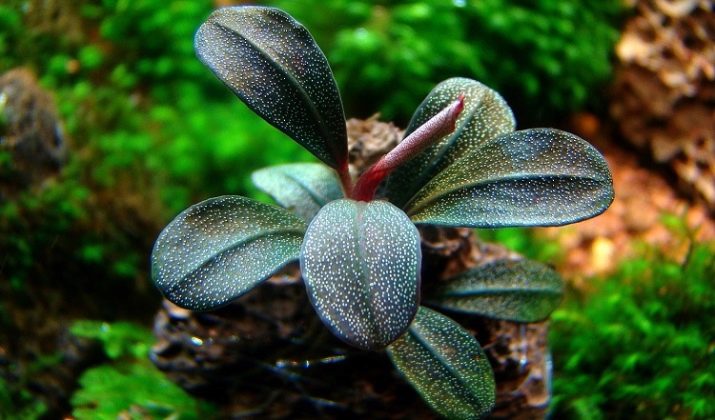
Brownie red
This species is also difficult to access, but it is extremely valuable for aquarists. It is famous for its beautiful reddish hue, which fits very harmoniously into the design of the aquarium. The length of the leaf plate is 1-3 cm. This type is a little more difficult to care for than the option described above. The optimum temperature range is 22-28 degrees, the acidity of the water is 6-8.
It is customary to plant this plant in the center - this way you can create an elegant composition. This variety also belongs to the slow-growing species.
It is indifferent to the level of lighting, and reproduction is carried out by cutting the rhizome.
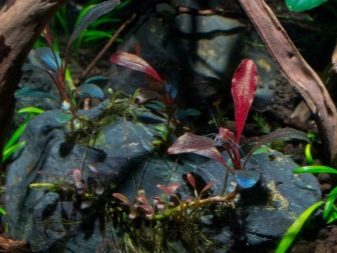
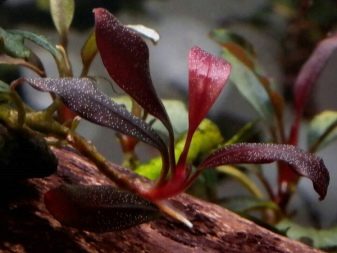
Landing
Before planting a new plant, do not neglect quarantine measures. If the shoot was brought from natural conditions, then place it in a 2 liter plastic container for several days and change the water every day. In such conditions, various parasites will drown. After that, you can proceed to the adaptation stage. The plant is placed in a paludarium or greenhouse, treated with "Epin" or "Fitosporin". The quarantine period is 40 days... After this time, the specimen is ready for planting in the aquarium.
All types of bucephalandra have powerful root system, since in nature a plant develops with a strong movement of water. Therefore, culture itself attaches to the ground, and when planted in the aquarium, it can simply be tied to a stone or snag.
If the shoot is planted in the ground, then the aquarist must take care of its nutrition in advance. Some experts still advise to first plant in the ground in order to get a powerful, well-developed root system and to enable it to reliably gain a foothold in it in the future.
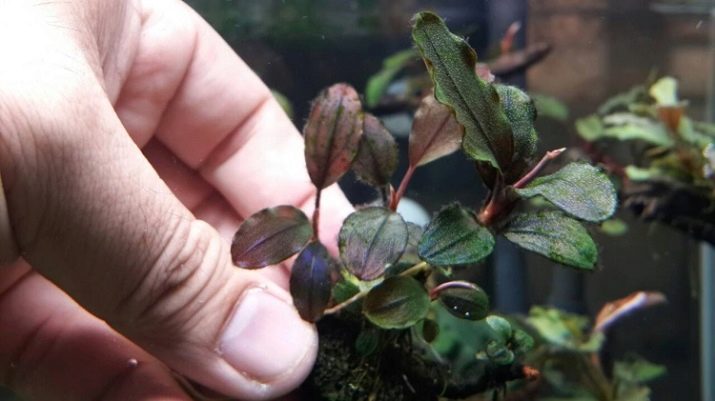
Maintenance and care
On average, the water temperature for bucephalandra should be within 22-25 degrees, hardness - 5-15, pH acidity - 6.3-7.3. It is very important to control the condition of the water and keep the indicators at the same level, since a sharp change in one of the parameters can lead to leaf rot and death of the plant. If the specimen died, then do not rush to get rid of it. Try to clean the roots of decayed fragments and get promising cuttings from which new specimens will appear.
As already mentioned, this plant is unpretentious to lighting and can develop at a lamp power of 0.5 watts per liter, however, in all its glory, bucephalandra can be observed only under fairly bright lighting. Apply CO2 fertilizer and iron-rich fertilizers regularly. Do not forget about the weekly replacement of 20-30% of the volume with fresh water that has settled during the day.
Culture transfer is not recommended. since it takes a long time to adapt to a new place. But if the need arose, then it is possible to move to another site.Reproduction is carried out in a vegetative way. A daughter shoot is separated from the parent specimen. Placing one plant in an aquarium is more often practiced, but group planting is also possible to design the appearance of an artificial reservoir.

For more information about Bucephalandra, see the video.








